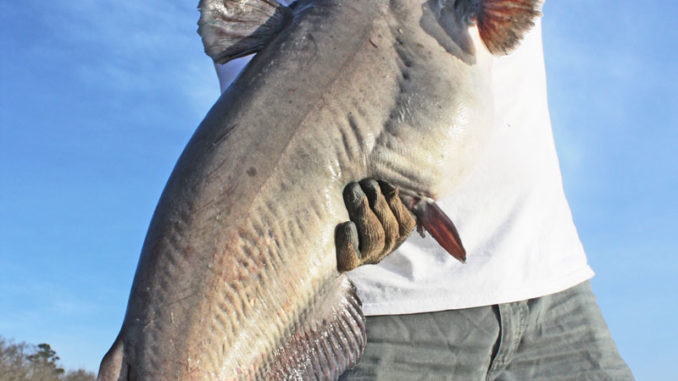
It’s one thing to have fishermen tout a lake as being great for a certain species, but taking a look from a scientific and biological perspective adds depth to that analysis.
David Goodfred, a biologist with the N.C. Wildlife Resources Commission, said data accumulated in recent years documents the explosion of blue catfish in Lake Wylie.
“Not only has the numbers of blue catfish increased dramatically since 2007, the average size of the blue catfish has continued to increase rapidly,” Goodfred said. “We had three years of data from fish caught by Dieter Melhorn. He measured, weighed and documented data on 1,300 catfish. In addition, we were able to study the catfish tournament results on Lake Wylie from the Catawba Catfish Club from 2009 through 2015.
“The club data showed that the average weight of the winning catch went up 150 percent during that time,” he said. “That’s dramatic and indicative of a thriving fishery. The data from Melhorn supported that, but it also gave us a good perspective on the channel catfish. Lake Wylie was, in the late 1990s and early 2000s, a premier channel catfish fishery. On any given day, a large number of 6-pound plus channel cats could be caught. Blue catfish were first documented in 2002, and they boomed in size and numbers.
“Based on the data we have, the average blue catfish from Lake Wylie will be close to the 10-pound class,” Goodfred said. “The potential for much-larger blue catfish is high and increasing. The channel catfish are still available in great numbers but are being outcompeted by the blue catfish in the large sizes. Fishermen catch lots of channel catfish up to 17 inches, and the average fish weighs around 3 pounds. But the 6-pound plus fish are now seldom caught. That’s the trade-off for the blue catfish.”
Goodfred is encouraged that, based on data, no native fish populations have been hurt by the blue catfish. He said flatheads have been in the lake for a long time, and many flatheads from 40 pounds and up are caught.
When asked about the potential for Lake Wylie to grow a state record catfish, Goodfred didn’t hesitate.
“Fishermen are in the ‘honeymoon’ phase with big blue catfish right now,” Goodfred said. “The lake is very fertile and has a great forage base for catfish, including gizzard and threadfin shad, lots of white perch and other species blue catfish will eat.
“We’re seeing something special at Lake Wylie,” he said. “As a scientist, I can’t predict when or where a record will be caught, but I would not be surprised if I get a phone call in January 2016 that someone caught a record catfish in Lake Wylie. I don’t know how long the boom will last, but it’s very strong right now.”





Be the first to comment